Side-by-side view
 Home page
Home pageRemember ViewMaster? Stereoscopes? Tru-Vue? To most people who have only seen professionally produced stereo photographs, the result can seem like magic. But the techniques for taking 3-D pictures aren't difficult, and they're made easier - and far cheaper - by modern digital cameras and computer-based editing tools. Viewers are relatively cheap and available from companies like Reel3D.
Watch for my upcoming book on 3-D photographic technique and composition, which will be advertised here. In the meantime, grab your stereoscope (for the side-by-side views) or red/blue glasses (for the anaglyphs), and take a look at the pictures below.
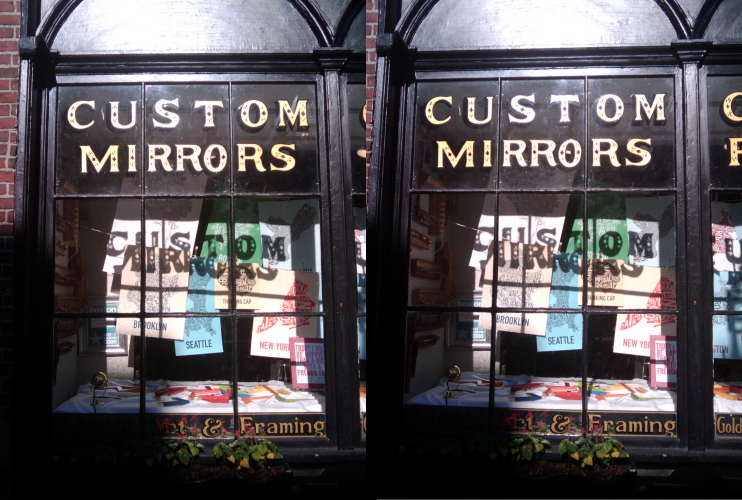
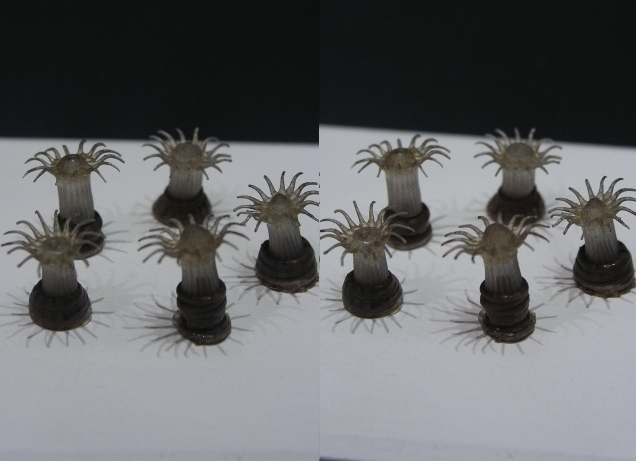
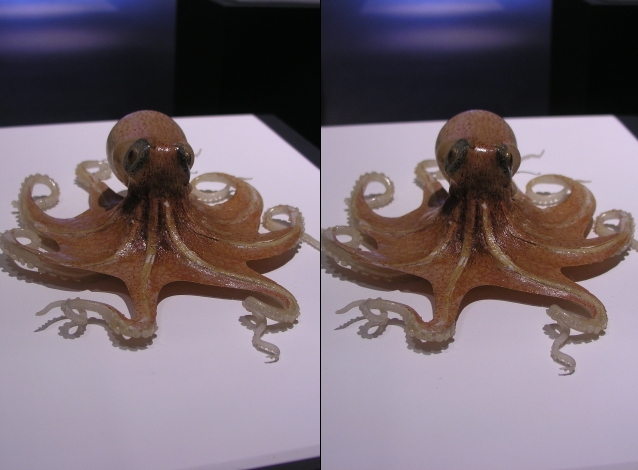
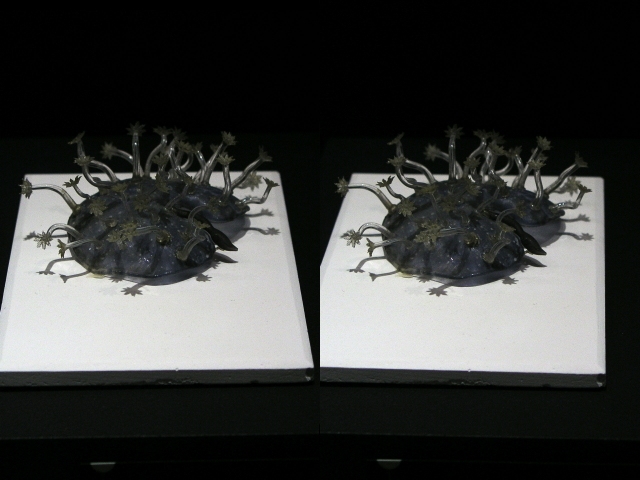
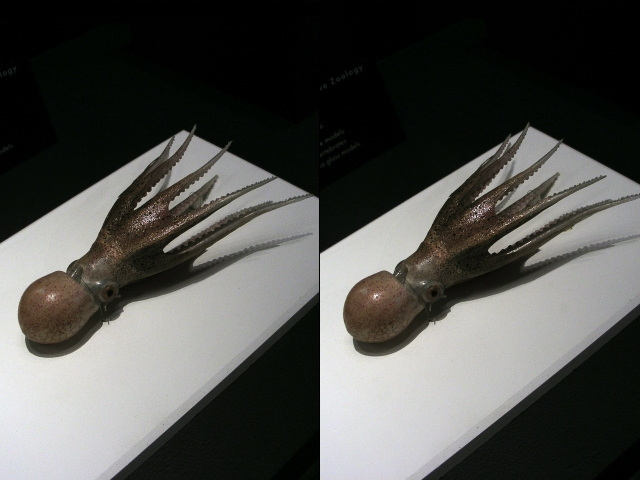
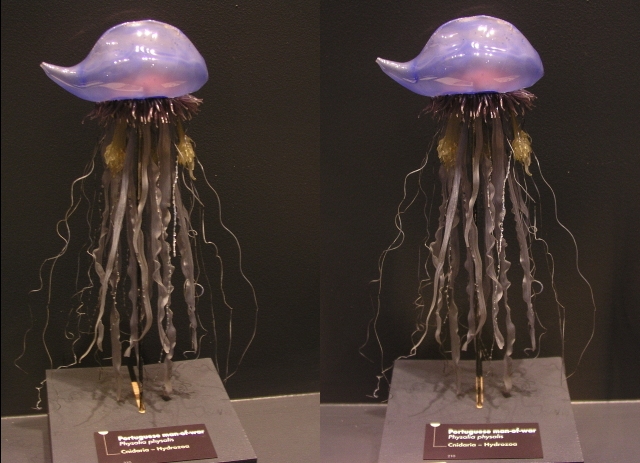
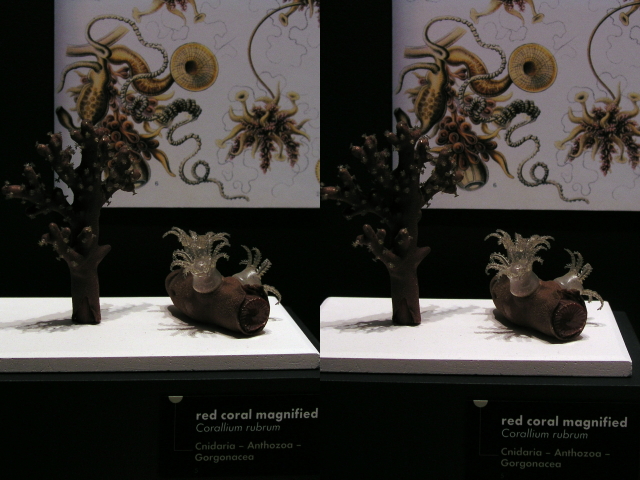
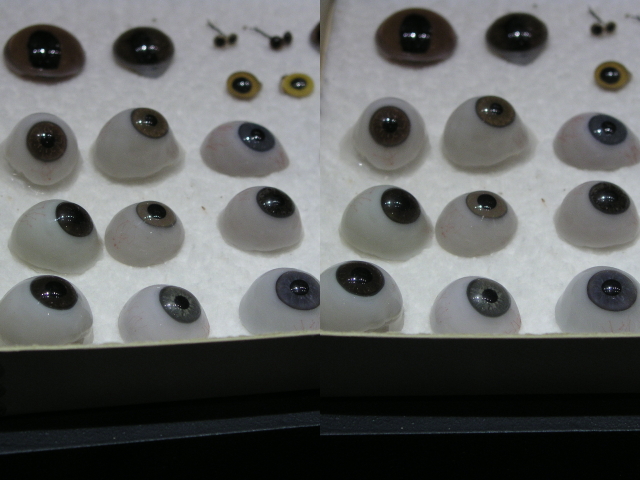
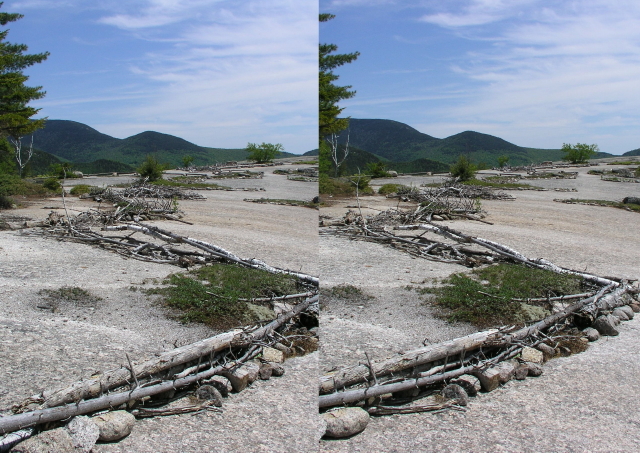
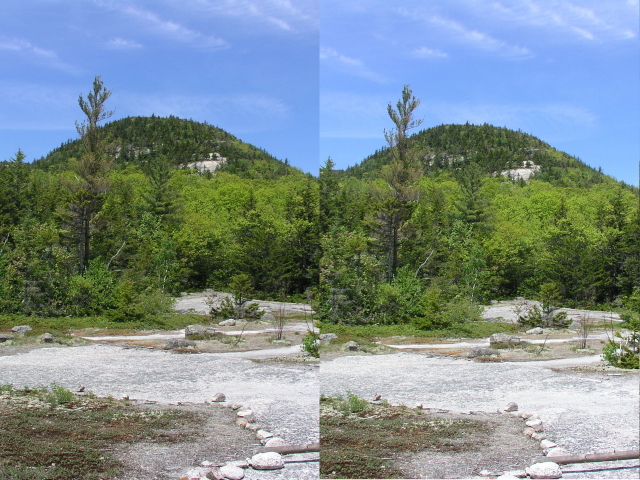
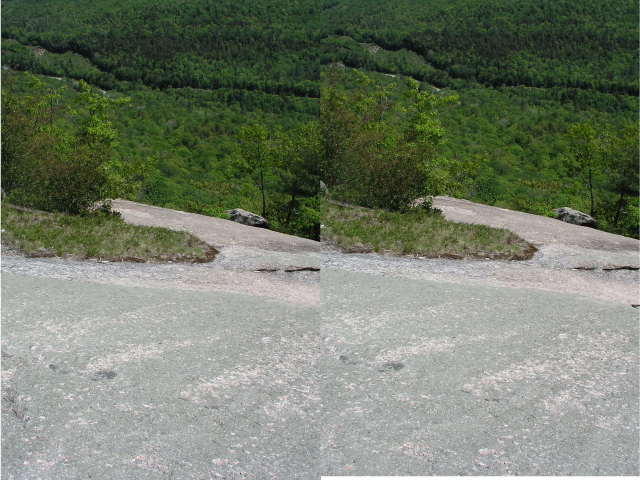
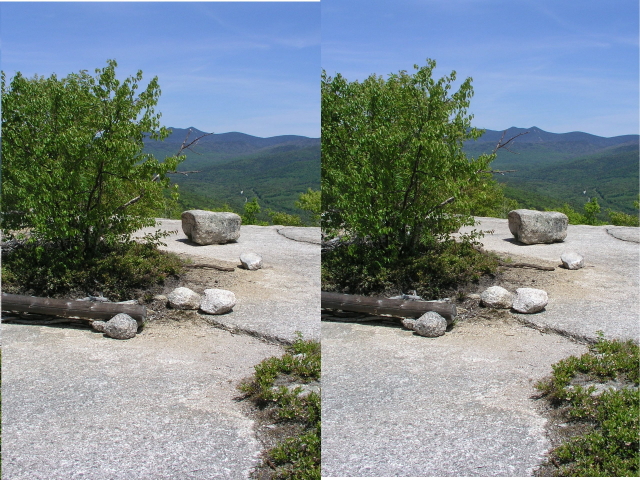
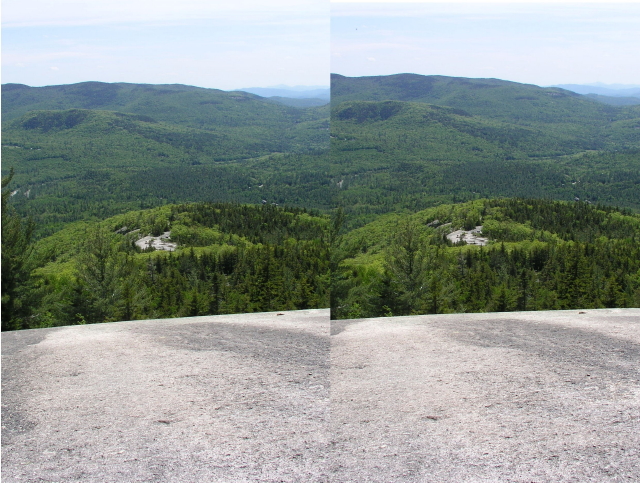
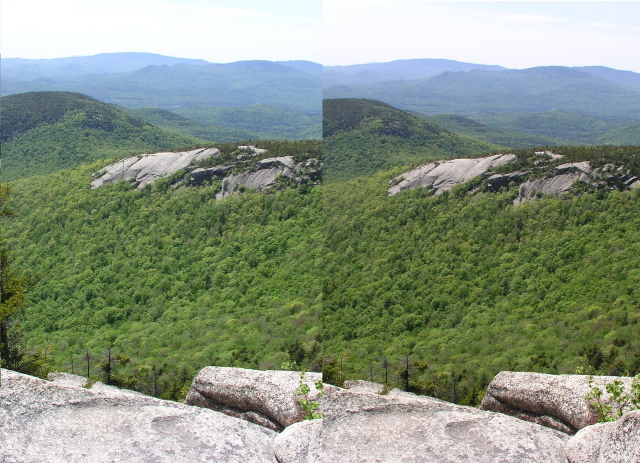
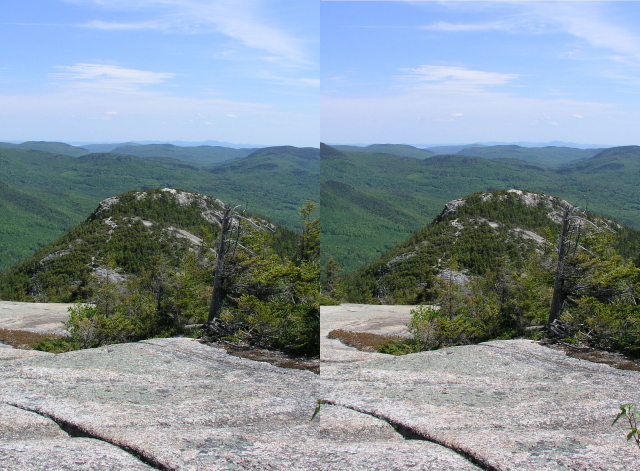
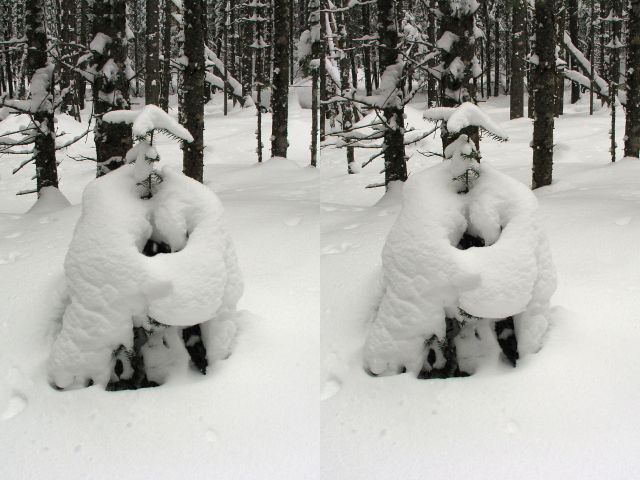
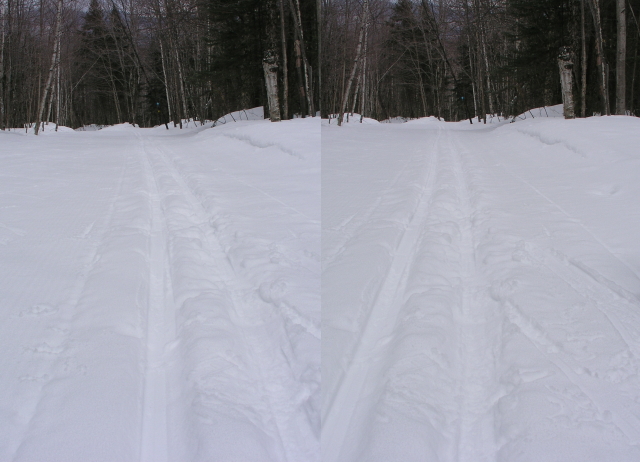
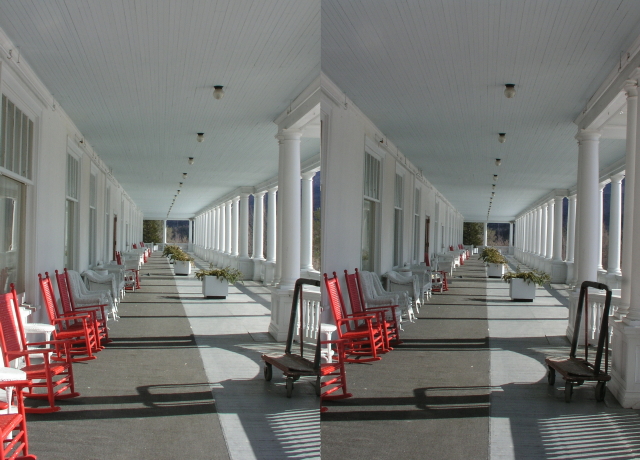
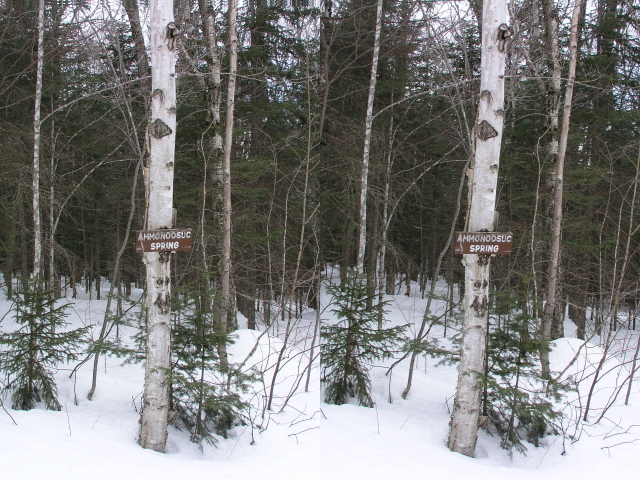
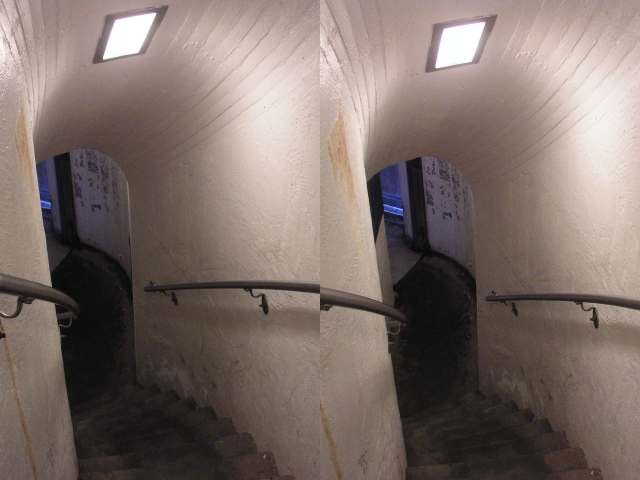
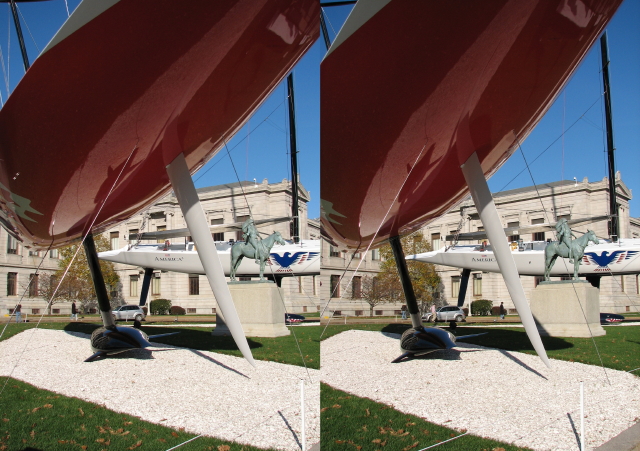
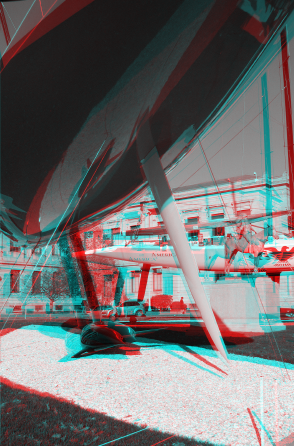
I was at the MFA for a second visit to the Ralph Lauren car collection (see the Jag picture below). I went outside with a friend and wanted to show him how 3-D photography worked. I didn't have a camera with me on this trip but I took this with his conventional digital camera. At home, I whipped up this stereo pair for him in a couple of minutes... he's out taking stereo pics of his own now.
I love the juxtaposition of different angles at different distances, the way the guy wires for the boat in the foreground pop out of the picture, and just the absurdity of two twelve meter yachts sharing the lawn with a statue of a guy on horseback.
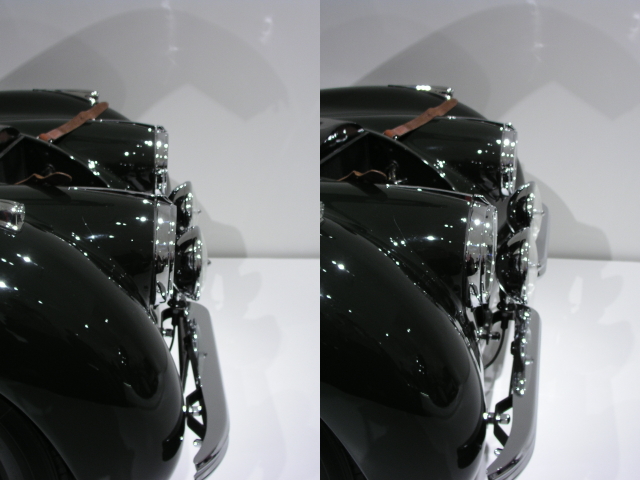
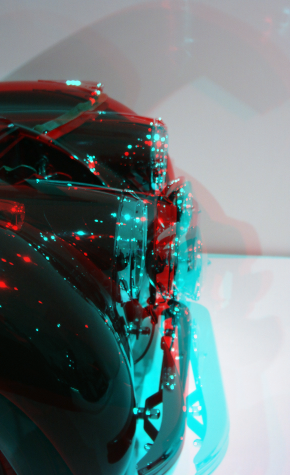
The MFA in Boston has sponsored a few unusual exhibits recently. This one featured the car collection of Ralph Lauren. While the cars were exhibited as sculpture, one night a month they opened the hoods and let the car geeks check out the equipment. This picture of the nose of a Jaguar XK120 was taken with a bit too much separation, but the 3-D image shows the curves of the car much better than any conventional picture could. Plus, I like the shadow of the car's hood on the back wall. This one is much better in the side-by-side than in the anaglyph. Photographed with the Olympus 5050, roughly 50mm focal length, automatic exposure.
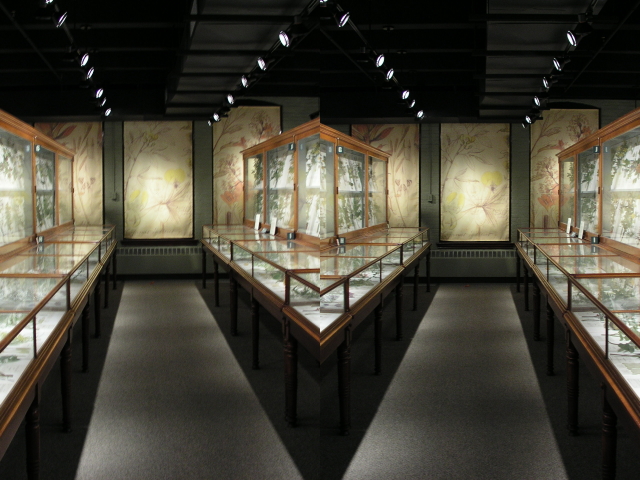
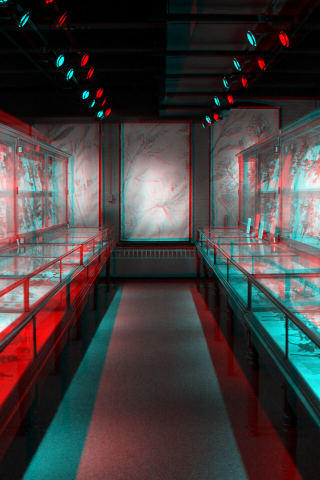
Harvard's collection of glass flowers is an amazing tribute to the dedication of two glassblowers who were commissioned by Harvard to create botanical models that Harvard students could use to study plants. Get as close as you want, these models look like the real thing. But the subject of this picture is not the flowers, but the neat geometric patterns of the aisles of display cases. Photographed with the Olympus 5050.
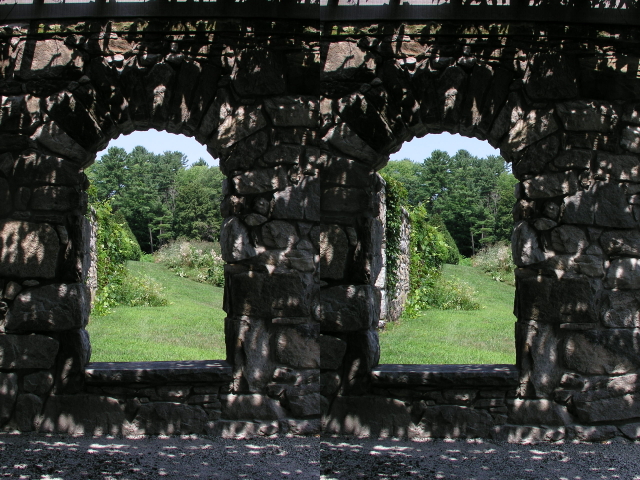
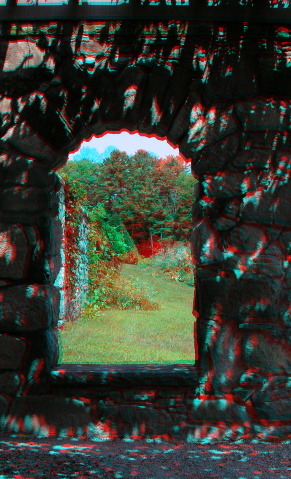
Everything was on a grand scale at this marvelous old estate, including this classic window opening in a stone wall. Photographed with the Olympus 3000, roughly 50mm focal length, automatic exposure.
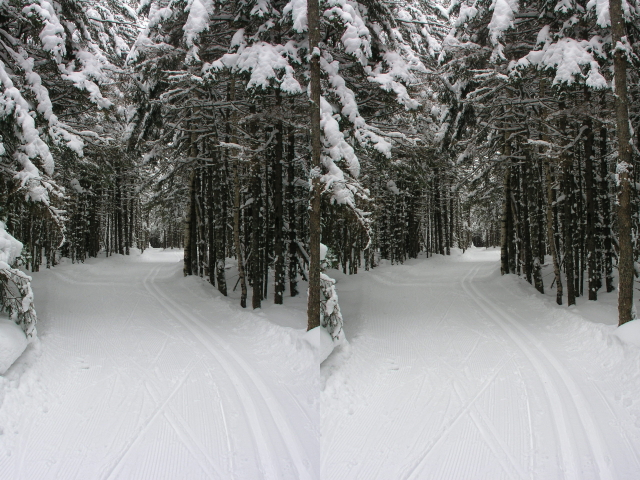
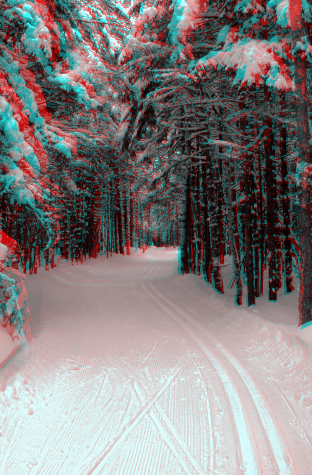
Winter 2004-5 was an awful one for cross-country skiing - at least until mid-February, when a series of winter storms left enough snow to last almost into April. After a few trips I got the ski bug out and decided to do some photography. I photographed this trail, on the way down the back side of the Bretton ski mountain, a day after a big snowstorm. The snow is pristine and the trail leads away and down the mountain. On a good day like this one, the whole area looks pretty much like this. Photographed with the Olympus 5050.
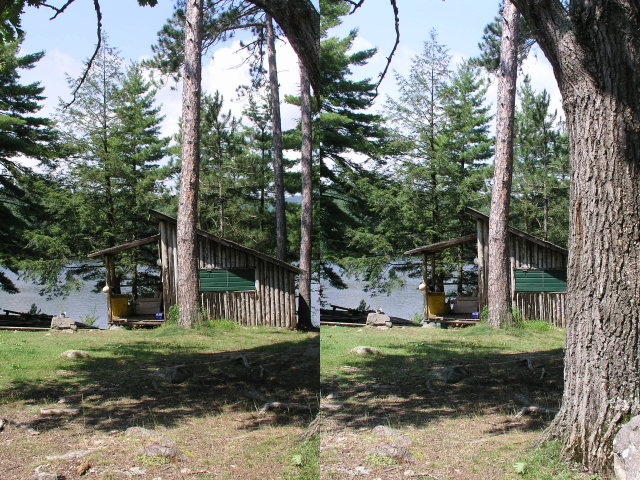
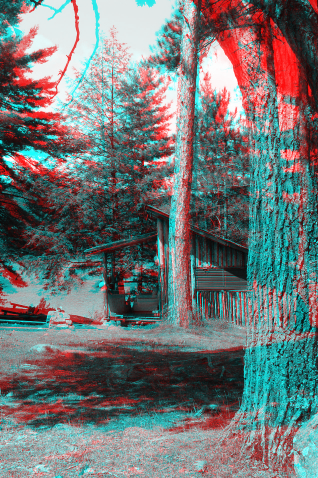
At camp for a reunion, I got a chance to take many stereo shots of very familiar scenes. I was a counselor in this cabin, which was built in 1940 and is still in use. The amazing thing in this picture is the foreground detail, which is especially visible in the side-by-side shots. Photographed with the Olympus 5050.
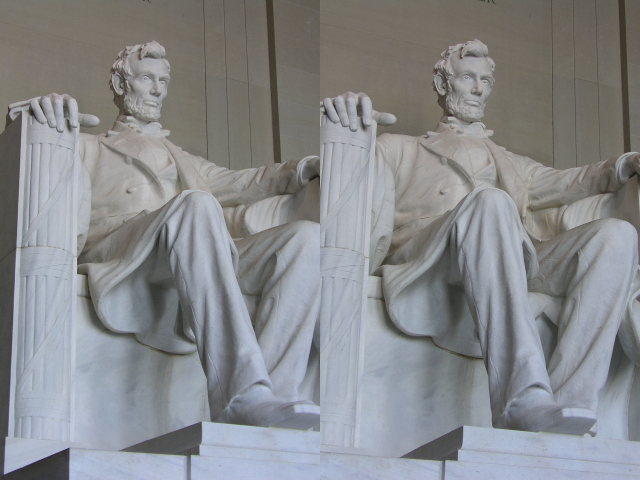
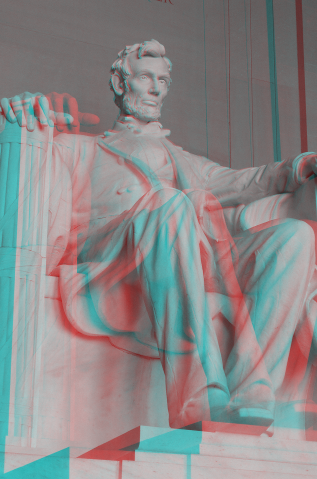
Washington, DC is a great place to find monumental things to photograph in 3-D. This image of the Daniel Chester French statue of Lincoln was the best stereo shot I got on this trip. Photographed with the Olympus Camedia 5050, roughly 50mm focal length, automatic exposure.

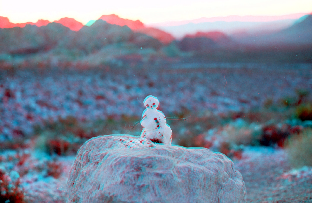
It was snowing when I flew into Las Vegas airport. Whiteout conditions continued on and off during my drive to the hotel. I headed over to Red Rock Canyon as soon as I unpacked, and found a steady stream of tourists, plus news trucks and camera crews, there to witness the inch or so of actual snow on the desert floor. As I was leaving, I ran into a group of people who take a monthly hike through the desert on the night of the full moon. My unlined jacket wasn't going to cut it in the 25 degree weather, but the trip leader happened to have an extra down jacket, and off I went. Halfway through the walk, the clouds broke, and the light caused by the full moon on the snow-covered mountains and the desert that surrounded us was simply indescribable. Unfortunately, my camera equipment wasn't up to capturing it, although I got some interesting pictures the following morning.
The next morning, I drove back to Red Rock to photograph the sunrise from the highest point on the loop road. While I was waiting for that event, I noticed a few snowballs on the ground next to the parking lot pavement. I realized they were the remains of a snowman that someone had built the night before. The poor guy was doomed to a short life as temperatures would quickly rise above 50 degrees once the sun was up. I decided to give him one more lease on life, reassembled him on top of a boulder, and took a few pictures including this 3-D shot. The out-of-focus background is unorthodox for a 3-D photo, but in this case I think it works pretty well.
A snowman in the desert fifteen miles from Las Vegas is one of the more ephemeral things around, but this one may live forever on the Internet. Photographed with the Olympus 3000, roughly 50mm focal length, automatic exposure.
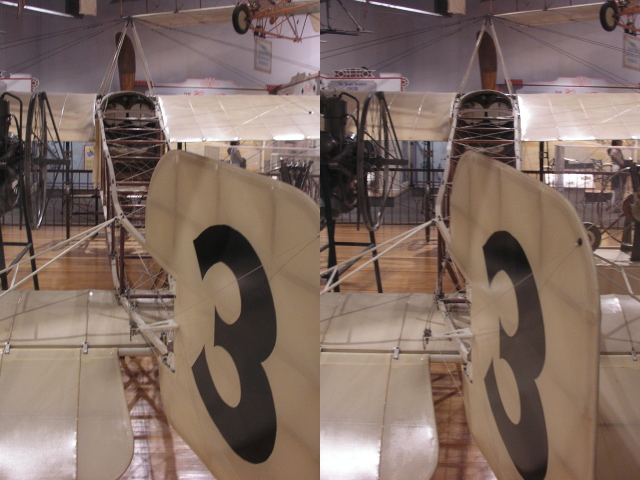
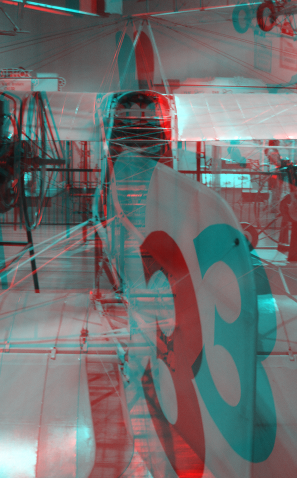
With their long wings and fuselages, planes are great 3-D subjects. This shot, although a bit overseparated, shows just how scary it must have been for the people who piloted these early craft. Photographed with the 5050.

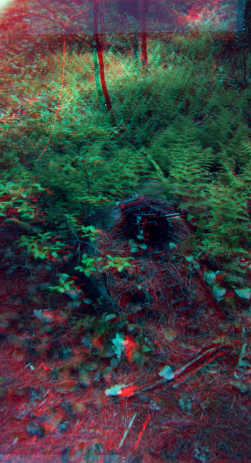
You never know what you're going to find. Walking around Middlesex Fells, I ran across a set of these tiny houses, built on mounds in the middle of the woods - either by elves or by a human with a sense of humor and way too much time on his hands. This was the best of them, complete with stairs, a thatched roof and a working door. I've gone back since and there's no trace left of the houses. Maybe the elves have moved on. Photographed with the Olympus 3000, roughly 50mm focal length, automatic exposure.
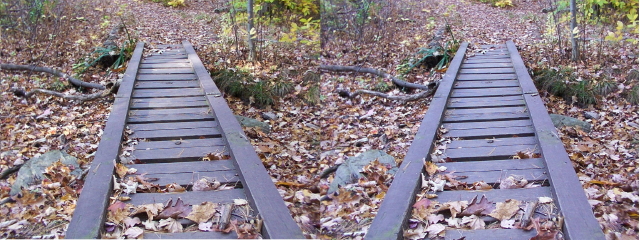
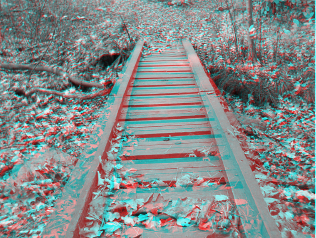
Long straight lines are always fun to photograph in 3-D. This bridge crosses a small gully. Photographed with a pair of $5 disposable cameras taped together - no expense was spared in getting a quality shot.
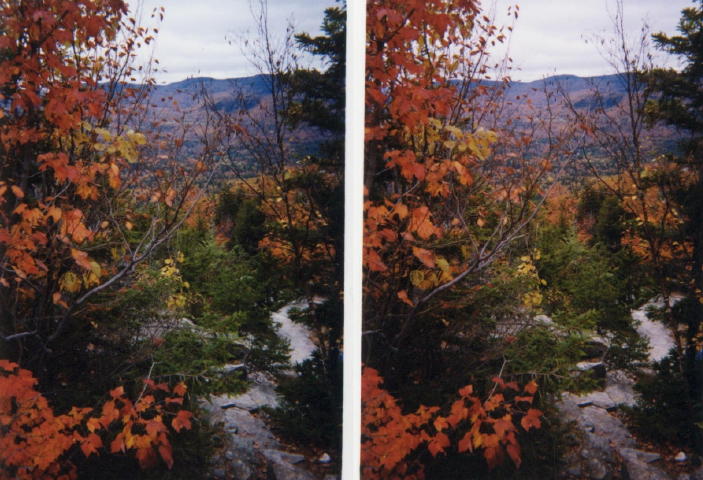
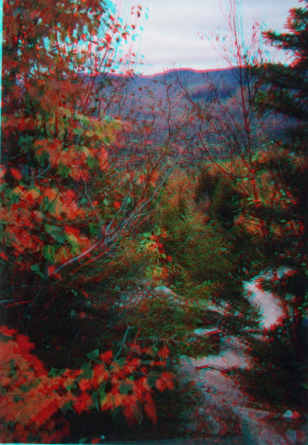
One of my early experiments with stereo photography, and a sentimental favorite. Shot on the side of Welch Mountain, the stereo treatment brings out a great deal of detail, like the dead tree branch in the foreground, that disappear on a conventional photo. Besides, I'm a sucker for fall colors.
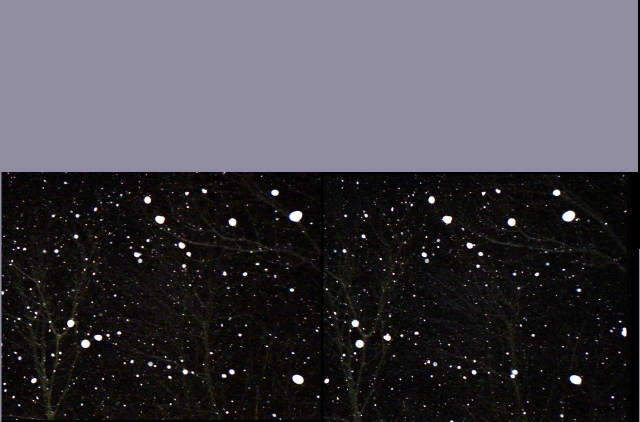

I'll leave this one to you to figure out. Email me if you think you know what it is. Photographed with a Nimslo.